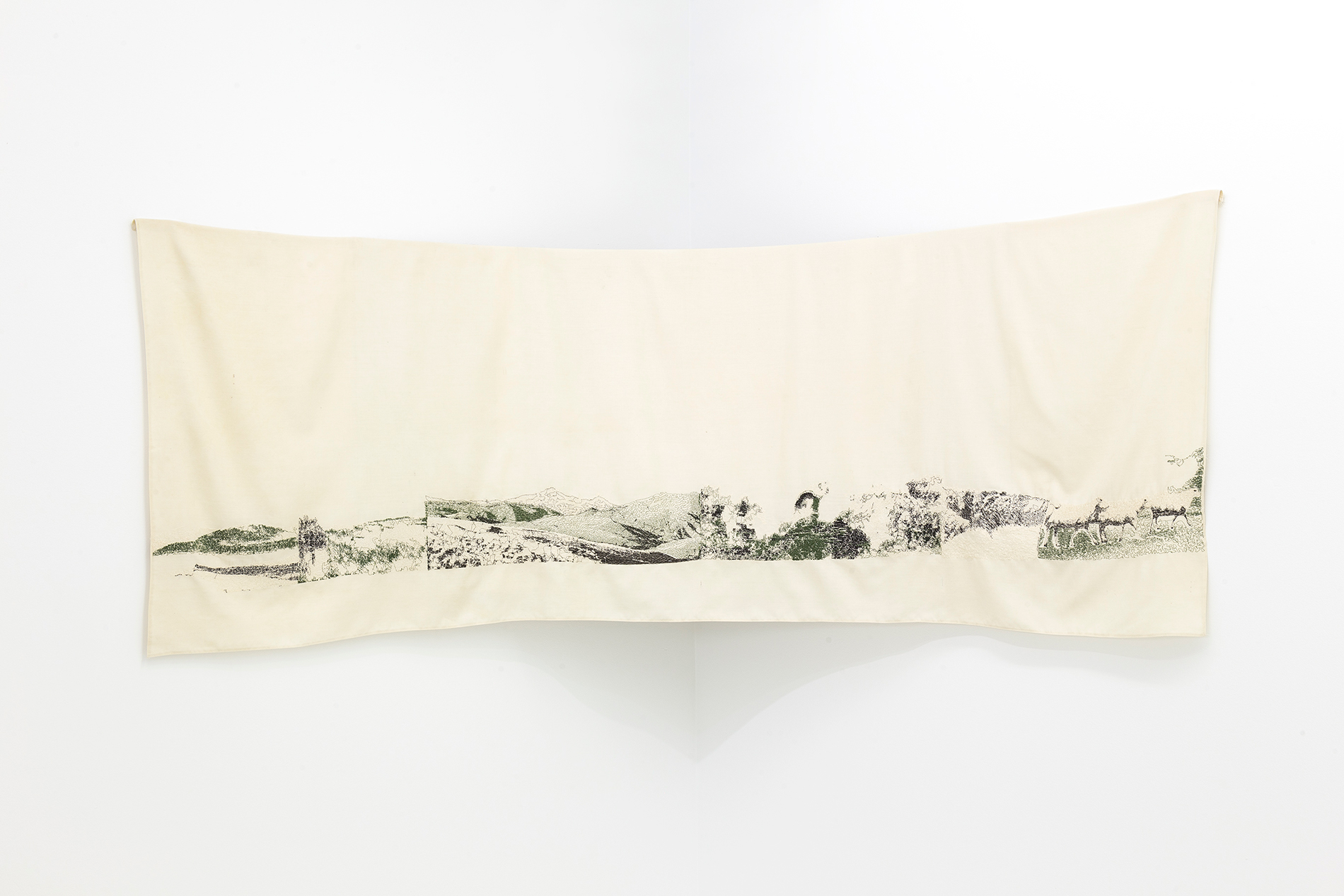Armenian Spatial Imaginaries
Design for Social Justice, Embroidery Art, Research-creation, Textile ArtArmenian Spatial Imaginaries

Armenian spatial imaginaries (2018) reflect on the current entangled understanding of the Armenian geopolitical dilemma. Armenian spatiality has evolved toward an unsettling understanding of what constitutes the present-day Armenian homeland. For centuries, there has been a lack of cohesive consensus about territorial claims, as the land that is now the Republic of Armenia is only a small part of the Ancient lands of Armenians. New alternative narratives are necessary in order to advance a geography of justice. But what designerly means can redefine Armenians’ relationship to their geopolitical realities? In this project, I investigate ways in which thought can be translated into thread to convey emotional diasporic knowledge through critical materiality. Using design fictions, alternative spatial narratives are conjectured to construct multi-layered Armenian landscapes that span beyond geographical coordinates. A new Armenian sense of place emerges culturally coded with nostalgic spatial information such as mountains, valleys, rivers, people and animals that are typically imprinted in the diasporic Armenian consciousness as sights of their ancient homeland.
Due to conflicting international interests, the Armenian geopolitical dilemma is unlikely to be resolved in the short term and Armenians can only resort to symbolic representations of territorial alternatives. But, how can design instigate a cultural discourse and raise awareness on Armenian territorial claims and indigenous rights?
In this project, I explore the poeticized yet complicated relationship of transnational Armenians with their inherited geopolitical dilemma. Using design fictions to critique the latter, alternative spatial narratives are conjectured in suspension between the present-day reality of Genocide denial and the possible reality of future resolution.
My research into textile practices is driven not only by embroidery techniques that can convey Armenian spatiality, but also by an underlying interest in Armenian textile heritage and symbolism. The fabric aesthetics of this project were inspired from a handkerchief that was embroidered with Armenian cutwork by my grandmother.
This handkerchief served as an example of diasporic Armenian textile heritage in my own life.
The destabilizing interference that fractures the overall landforms can hardly be avoided. This disruption alludes to a critique of the notion of enforced political borders that emerge where edges meet. However, a palpable dissolution is visible when looked at closely, whereby the muddle of stitches permeates the borders. This intentional jumble insinuates at an underlying network of social and cultural relations that leave traces of a metaphorical dwelling. Subsequently, this visualization of transnational space encapsulates an idealistic geopolitical reality where ancient lands and present-day homeland are amalgamated. As such, my work stitches together a complex web of tangible Armenian emotions and cultural landscapes to make an abstract geopolitical statement. Embroidery opens up a “new dimension in the understanding of the interface between abstract and embodied knowledge, through the exploration of the relation between line and thread” [2]. Thought as thread transforms lines into meaning and materializes different forms of relational, emotional and spatial knowledge. Moreover, stitches exert a living texture that emerges in the embroidered surface of the landscape belt.
[2] Pajaczkowska, C. (2015). The thread and the line. Journal of Visual Art Practice, 14(1), 18–25. https://doi.org/10.1080/14702029.2015.1010354

